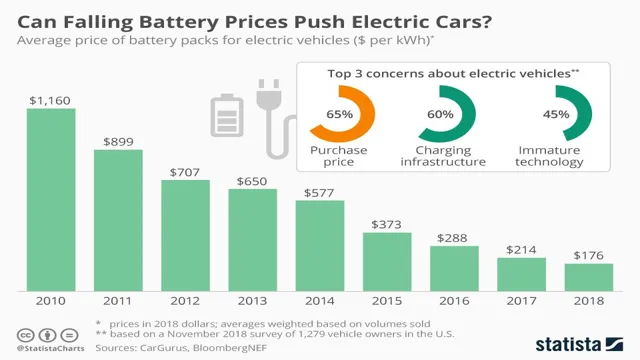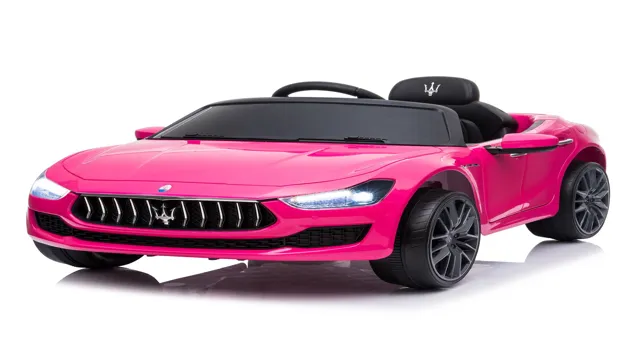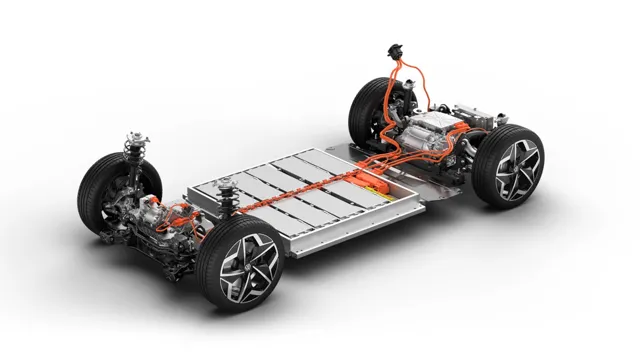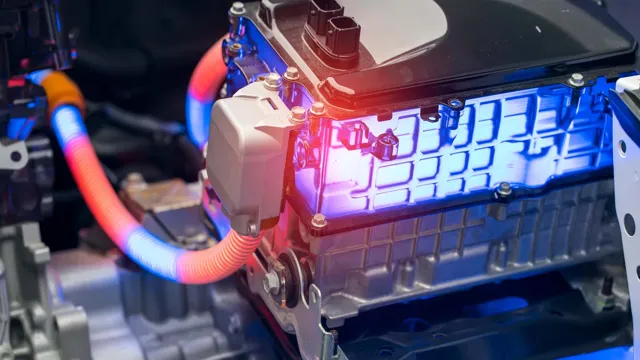A Comprehensive Guide to Understanding the Different Battery Types for Electric Cars
Electric cars have become increasingly popular in recent years as more people embrace the idea of eco-friendly transportation. One of the most significant components of an electric car is the battery, which powers the vehicle’s motor. However, not all batteries are created equal, and there are several types of batteries that electric cars can use.
When choosing an electric car, it’s important to know the different types of batteries available and how they differ from each other. In this blog post, we will explore the various battery types for electric cars and what makes them unique. From lithium-ion to nickel-metal hydride, we’ll take a deep dive into the world of electric car batteries and discover which one might be right for you.
Lithium-Ion Batteries
When it comes to electric cars, there are a few battery types to choose from. One of the most popular options is the lithium-ion battery. These batteries are used in a variety of electronic devices and have become more affordable in recent years, making them a feasible option for electric vehicles.
Lithium-ion batteries are known for their high energy density, which means they can store a lot of energy in a small space. This makes them ideal for electric cars, which need a lot of energy to power their motors. Another benefit of lithium-ion batteries is their ability to charge quickly, allowing drivers to get back on the road in no time.
Additionally, they have a longer lifespan than other types of batteries, which means they will need to be replaced less often. With all these advantages, it’s no surprise that lithium-ion batteries are a popular choice for electric car manufacturers and consumers alike.
Advantages and Disadvantages of Lithium-Ion Batteries
Lithium-Ion Batteries Lithium-ion batteries have become increasingly popular due to their efficiency and longevity compared to traditional batteries. One of the advantages of these batteries is that they have a higher energy density, meaning they can store more energy in a smaller space. Additionally, they have a longer lifespan and can be recharged many times before losing their ability to hold a charge.
However, lithium-ion batteries also have some disadvantages. They can be sensitive to high temperatures and can become unstable if not handled properly. They are also more expensive to manufacture than traditional batteries.
Despite these drawbacks, the advantages of lithium-ion batteries make them a popular choice for use in handheld devices, electric vehicles, and energy storage systems. As technology continues to advance, we can expect to see further improvements in the efficiency and durability of these batteries.
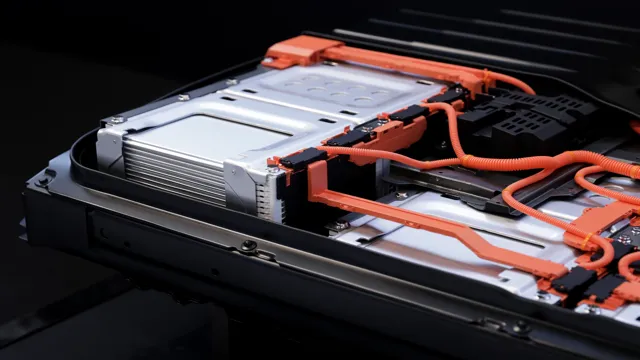
Examples of Electric Cars Using Lithium-Ion Batteries
Lithium-Ion Batteries Lithium-ion batteries are prevalent in electric cars due to their energy density, longer lifespan, and lower weight. With the rising need for sustainable transportation, many automakers are now producing electric vehicles that use these batteries. One example is the Tesla Model S, which boasts a range of over 400 miles on a single charge, largely thanks to its 100 kWh lithium-ion battery pack.
Other electric cars that use these types of batteries include the Chevrolet Bolt, Nissan Leaf, and BMW i These vehicles are proving to be an excellent alternative to gas-powered cars, especially with the increasing availability of charging infrastructure. Additionally, advances in technology have improved lithium-ion batteries’ safety and performance, making them even more suitable for electric vehicles.
With the world’s growing concern about climate change and environmental pollution, the popularity of electric cars using lithium-ion batteries is only set to increase further.
Nickel-Metal Hydride Batteries
As electric cars are becoming more popular, it’s crucial to understand the different battery types available. One such battery is the nickel-metal hydride battery. These batteries use a chemical reaction between nickel oxyhydroxide and hydrogen-absorbing alloy to create electricity.
They are known for their high energy density, meaning they can store a lot of energy in a small size. However, they tend to be less efficient than other battery types and have a shorter lifespan. Despite this, nickel-metal hydride batteries do have their advantages, including being more environmentally friendly than their lead-acid counterparts and having a lower risk of thermal runaway.
Overall, it’s important to weigh the pros and cons of each battery type before making a decision on which one is right for your electric car.
Advantages and Disadvantages of Nickel-Metal Hydride Batteries
Nickel-metal hydride batteries are a popular choice for many electronic devices, including toys, power tools, and other portable electronics. One of the biggest advantages of these batteries is their relatively low cost compared to other rechargeable battery types. They also have a higher capacity than nickel-cadmium batteries, which means they can hold more energy and last longer.
However, they do have some disadvantages, the main one being that they are less efficient than lithium-ion batteries. This means that they tend to lose their charge faster, especially when not in use, and may not provide as much power as other battery types. They also have a tendency to suffer from memory effect, where their capacity is reduced over time if they are not fully discharged before being recharged.
Regardless, nickel-metal hydride batteries are still a great choice for many applications and offer a good balance of cost and performance.
Examples of Electric Cars Using Nickel-Metal Hydride Batteries
Nickel-Metal Hydride Batteries When it comes to electric cars, the most common type of battery used is a lithium-ion battery. However, there are also examples of electric cars that use nickel-metal hydride batteries. These batteries were widely used in hybrid cars in the early days of the technology, and some models of electric cars still use them today.
One example is the Toyota Prius, which uses a NiMH battery pack to power its electric motor. The Honda Civic Hybrid also uses a NiMH battery pack, as does the Ford Escape Hybrid. While NiMH batteries are less energy-dense than lithium-ion batteries, they are still capable of providing good range and performance for electric cars.
The benefits of NiMH batteries include their long life span, low cost, and safety. They are also more environmentally friendly than lithium-ion batteries, as they do not contain toxic chemicals like cobalt. Overall, while lithium-ion batteries are currently the most popular option for electric cars, NiMH batteries still have a role to play in the industry.
Lead-Acid Batteries
When it comes to battery types for electric cars, there are several options to choose from. One of the most common types is the lead-acid battery, which has been used in cars for over a century. These batteries are relatively inexpensive compared to other types, but they do have some drawbacks.
For one, they are heavy and bulky, which can add extra weight to the car and take up space. Additionally, they have a limited lifespan and do not hold as much energy as other types of batteries, such as lithium-ion. Despite these downsides, lead-acid batteries are still popular because they are dependable and widely available.
If you are looking to purchase an electric car or already have one, it is important to do your research and consider the various battery types before making a decision.
Advantages and Disadvantages of Lead-Acid Batteries
Lead-Acid Batteries Lead-acid batteries are among the oldest rechargeable batteries still in use today. They are commonly used in cars, boats, and backup power systems due to their durability and reliability. One of the main advantages of lead-acid batteries is their low cost and availability.
They are also highly efficient and can produce high amounts of power quickly. However, there are also some disadvantages to lead-acid batteries. One of these is their weight.
Due to their lead-acid composition, they can be quite heavy, making them less portable and harder to move around. They also require regular maintenance, including checking the water levels and cleaning the terminals to prevent corrosion. Another disadvantage is that they have a limited lifespan and may need to be replaced every few years.
Despite these disadvantages, lead-acid batteries remain a popular choice due to their affordability and reliability. However, as technology continues to advance, other battery types such as lithium-ion are becoming more widely available and offer improved performance in certain applications. Nonetheless, lead-acid batteries continue to be a common choice for many industrial and automotive applications due to their balance of cost and performance.
Examples of Electric Cars Using Lead-Acid Batteries
Lead-Acid Batteries Lead-Acid Batteries have been around for decades and have been used in a variety of applications, including electric cars. While they may not be as lightweight or long-lasting as other battery types, they have proven to be reliable and inexpensive. Some examples of electric cars that use lead-acid batteries include the Ford Th!nk and the GEM electric car.
The Th!nk was produced from 1999-2002 and had a range of 50 miles on a single charge. The GEM electric car, on the other hand, is still in production and has a range of up to 60 miles. While these may not be the most impressive ranges compared to modern electric cars, for short commutes or running errands around town, they can be a practical and cost-effective option.
Overall, while lead-acid batteries may not be the most advanced technology, they still have a place in the electric car market and have proven to be a reliable option for many drivers.
Solid State Batteries and Future Developments
As electric cars become more and more popular, the demand for efficient and reliable batteries continues to grow. Currently, there are several battery types for electric cars, including lead-acid, nickel-metal hydride, and lithium-ion. Lead-acid batteries are the oldest and least expensive, but they are also the heaviest and have the shortest lifespan.
Nickel-metal hydride batteries are a bit more expensive but are more efficient and have a longer lifespan. Lithium-ion batteries are currently the most popular battery type for electric cars, as they are lightweight, have a longer lifespan, and hold more energy. However, there is another battery type that is beginning to gain attention for its potential to revolutionize the industry: solid-state batteries.
These batteries utilize a solid electrolyte instead of a liquid one, which makes them safer and more efficient. They also have the potential to hold more energy than lithium-ion batteries and charge faster. While still in development, solid-state batteries show promise for the future of electric cars.
Conclusion
So there you have it, folks. Battery types for electric cars come in all shapes and sizes, just like the cars they power. From humble lead-acid batteries to sophisticated lithium-ion alternatives, the world of electric cars is constantly evolving, and we can expect big things in the near future.
Whether you’re a die-hard environmentalist or simply looking for a more efficient ride, there’s no denying that battery technology is the heart of the electric car revolution. So next time you’re at the pump filling up your gas-guzzler, just remember that there’s a better, cleaner, and more innovative way to hit the road. It’s time to charge up and drive into the future!”
FAQs
What are the different types of batteries used in electric cars?
The different battery types used in electric cars include Lithium-ion, Nickel-Metal Hydride (NiMH), Lithium Polymer, and Lead-acid batteries.
Which battery type is most commonly used in electric cars?
Lithium-ion batteries are the most commonly used battery type in electric cars today due to their high energy density and longer lifespan.
What are the advantages of using Lithium-ion batteries in electric cars?
Lithium-ion batteries have a high energy density, longer lifespan, and require less maintenance compared to other battery types. They are also lighter in weight and have a faster charging time.
What are the disadvantages of using Lead-acid batteries in electric cars?
Lead-acid batteries are heavy, bulky, and have a shorter lifespan compared to other battery types. They also require regular maintenance and have a slower charging time.

